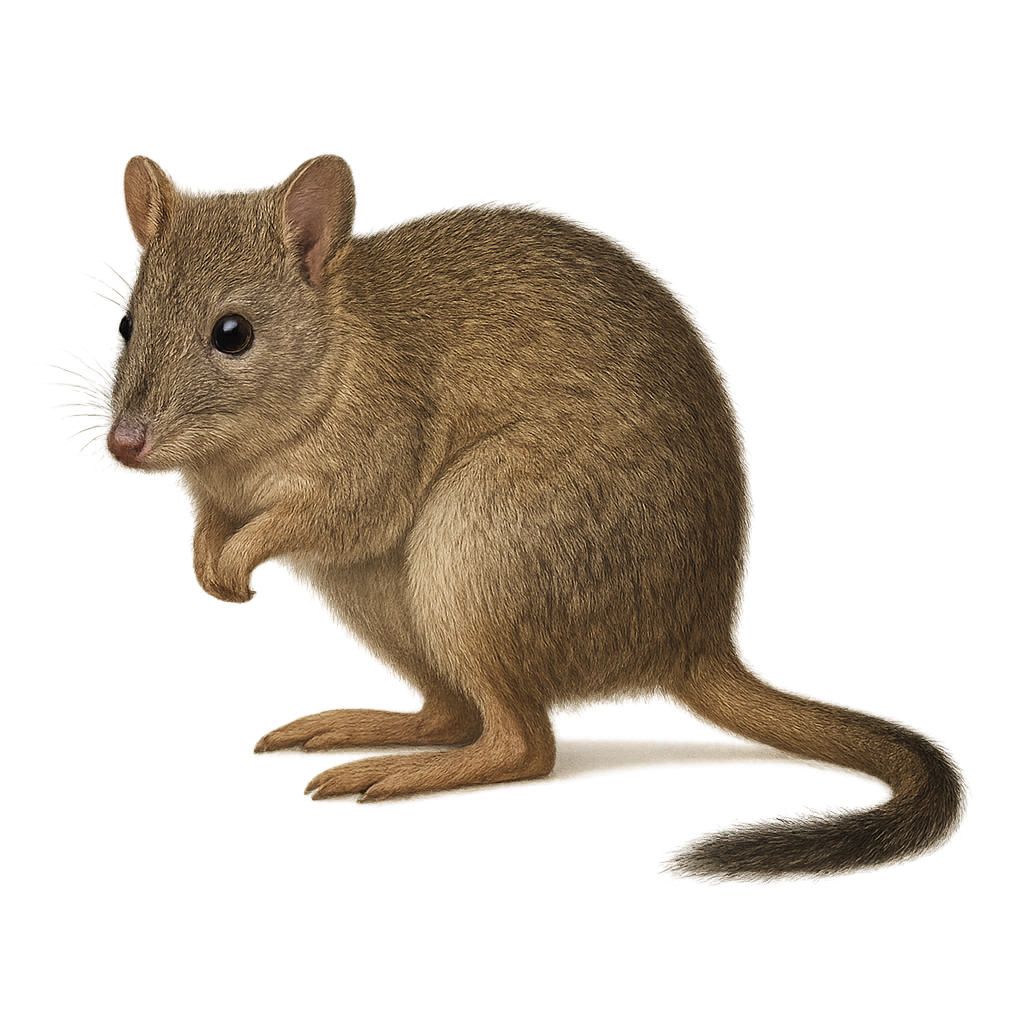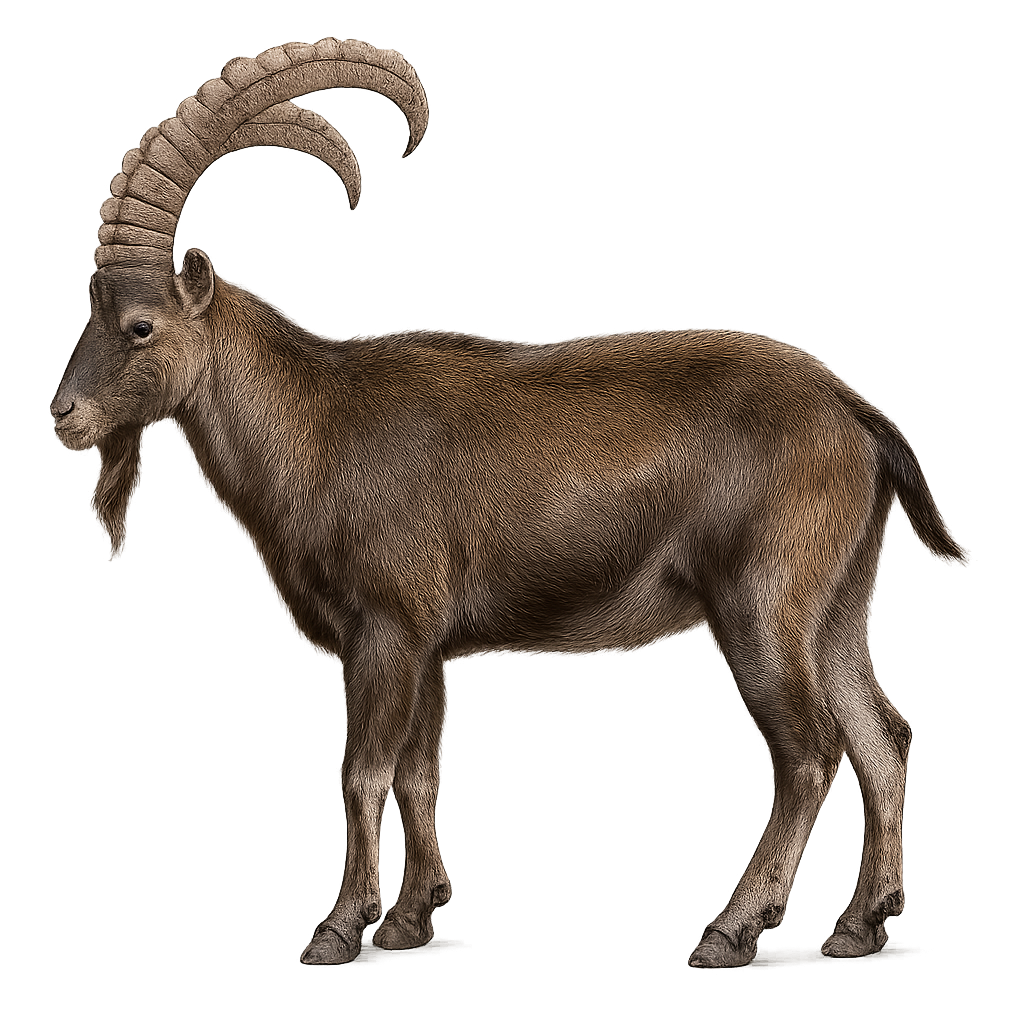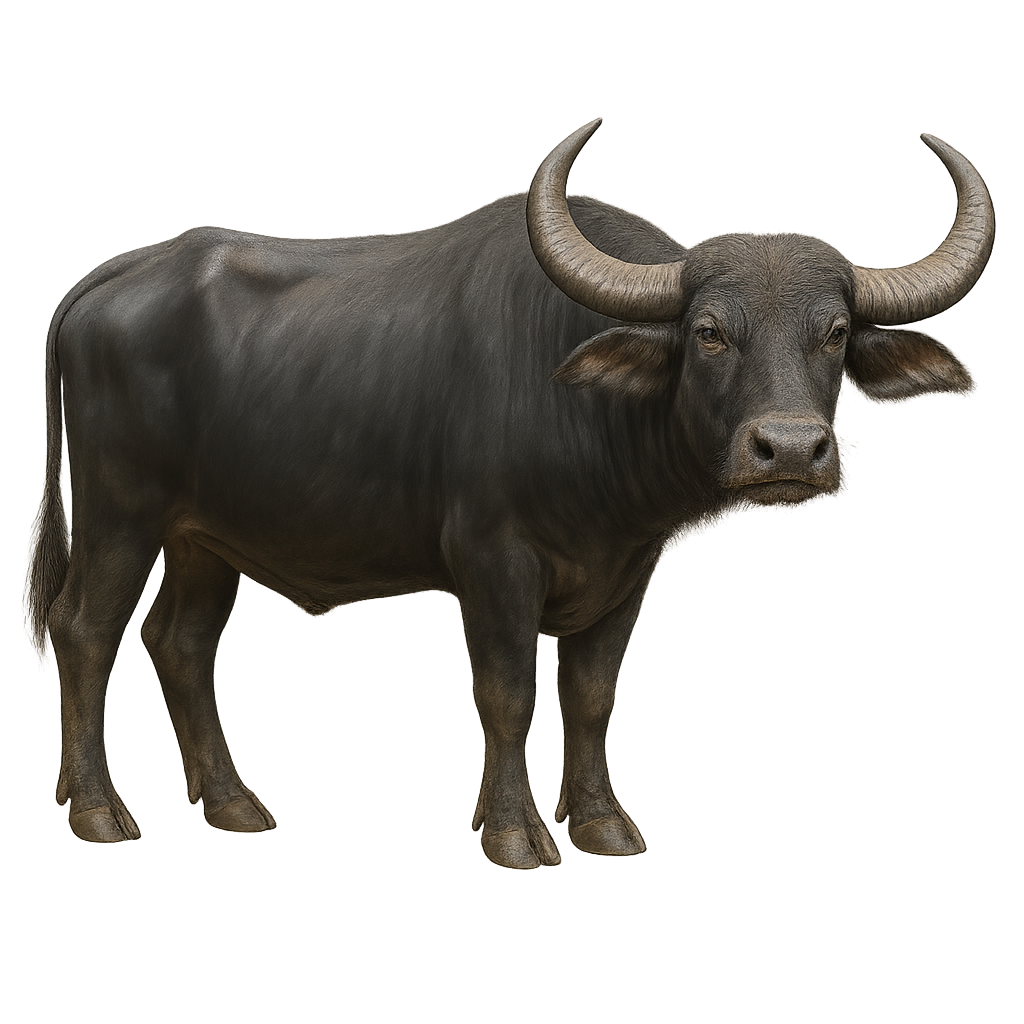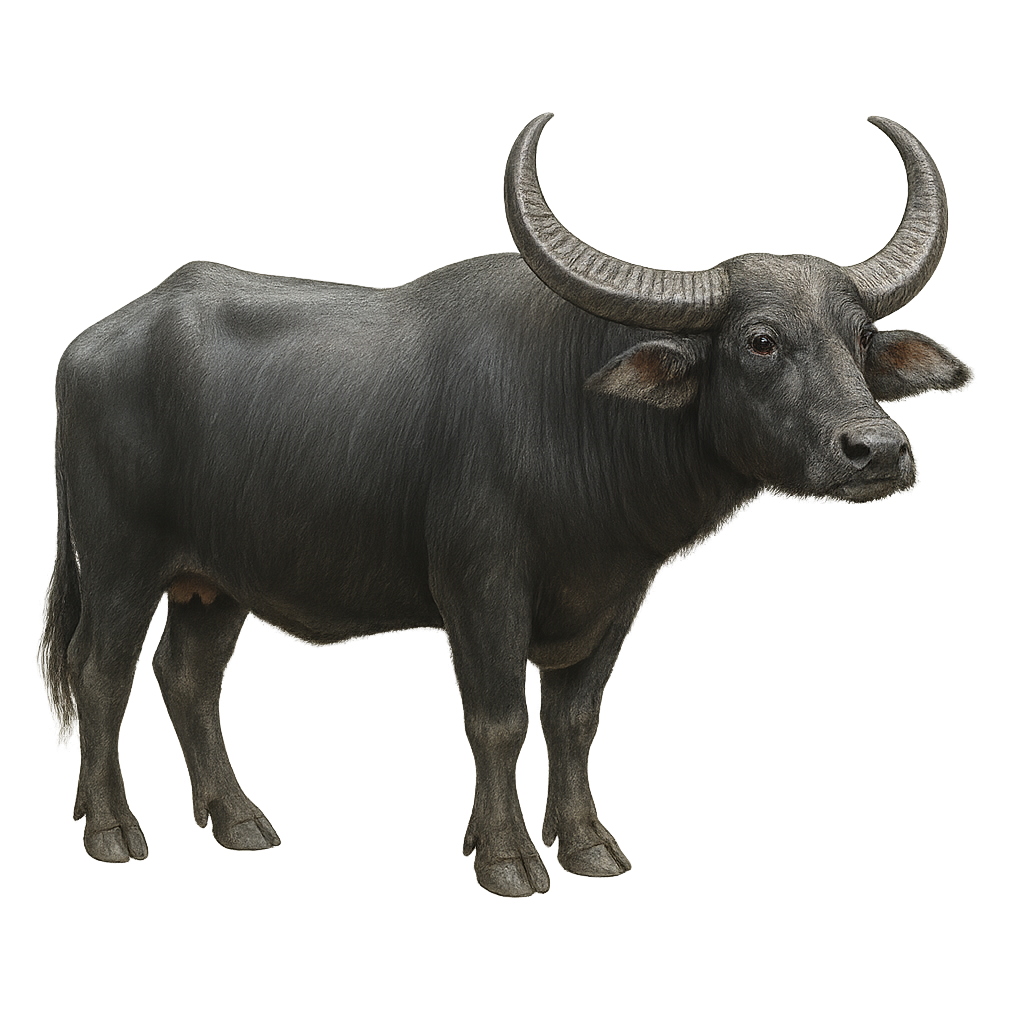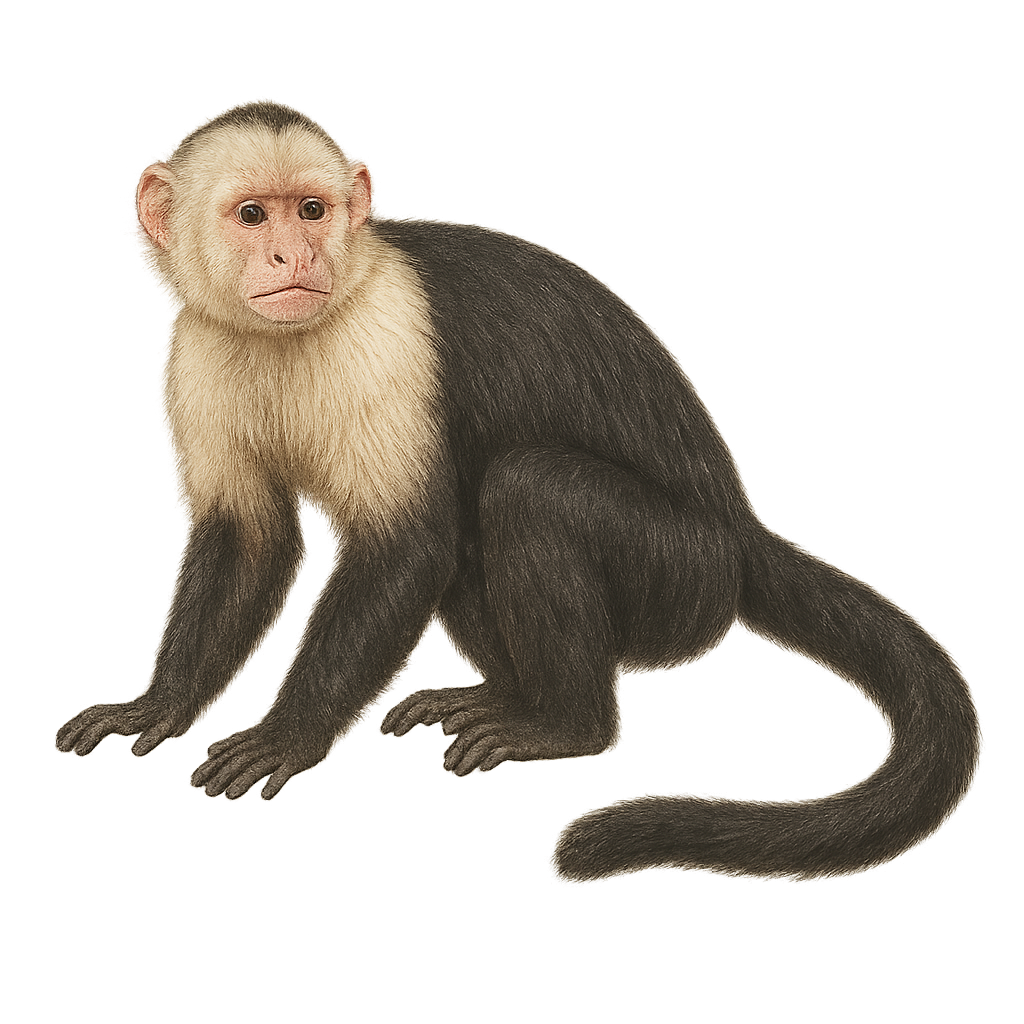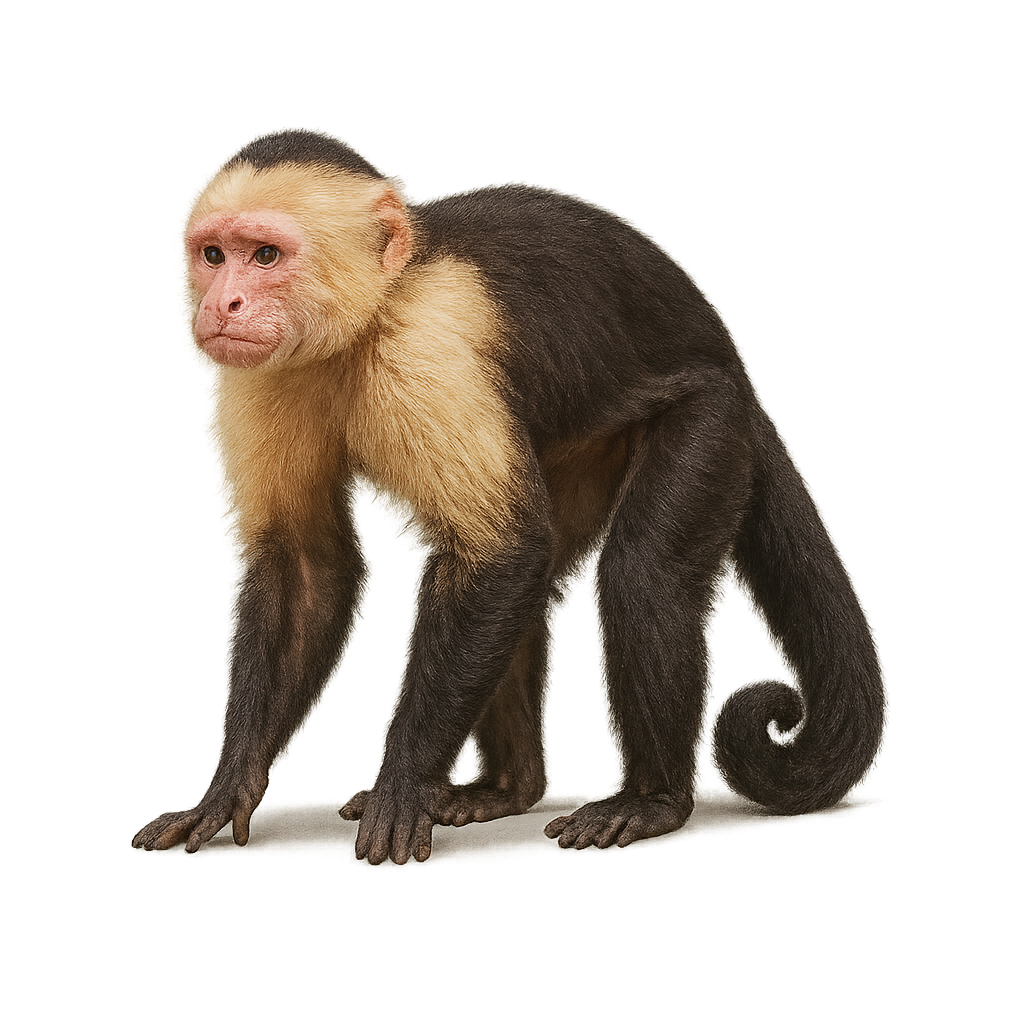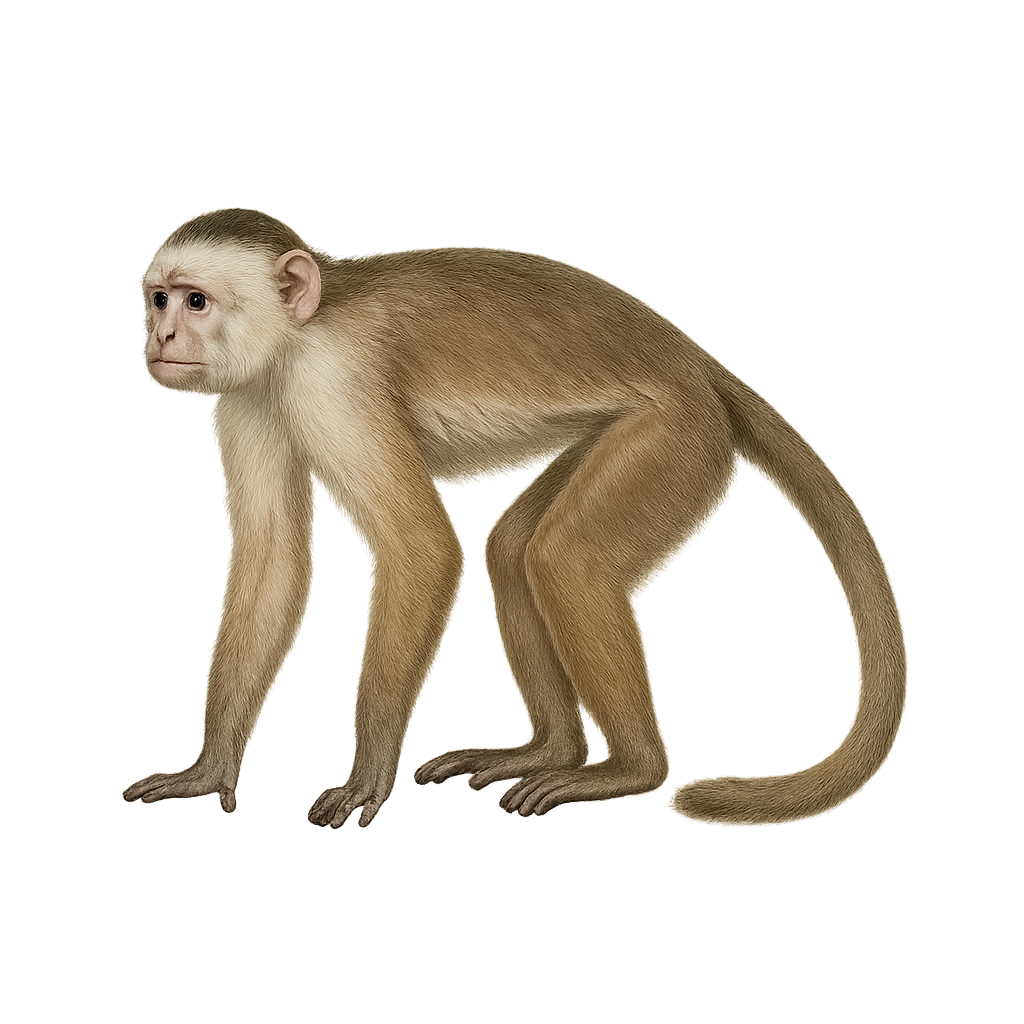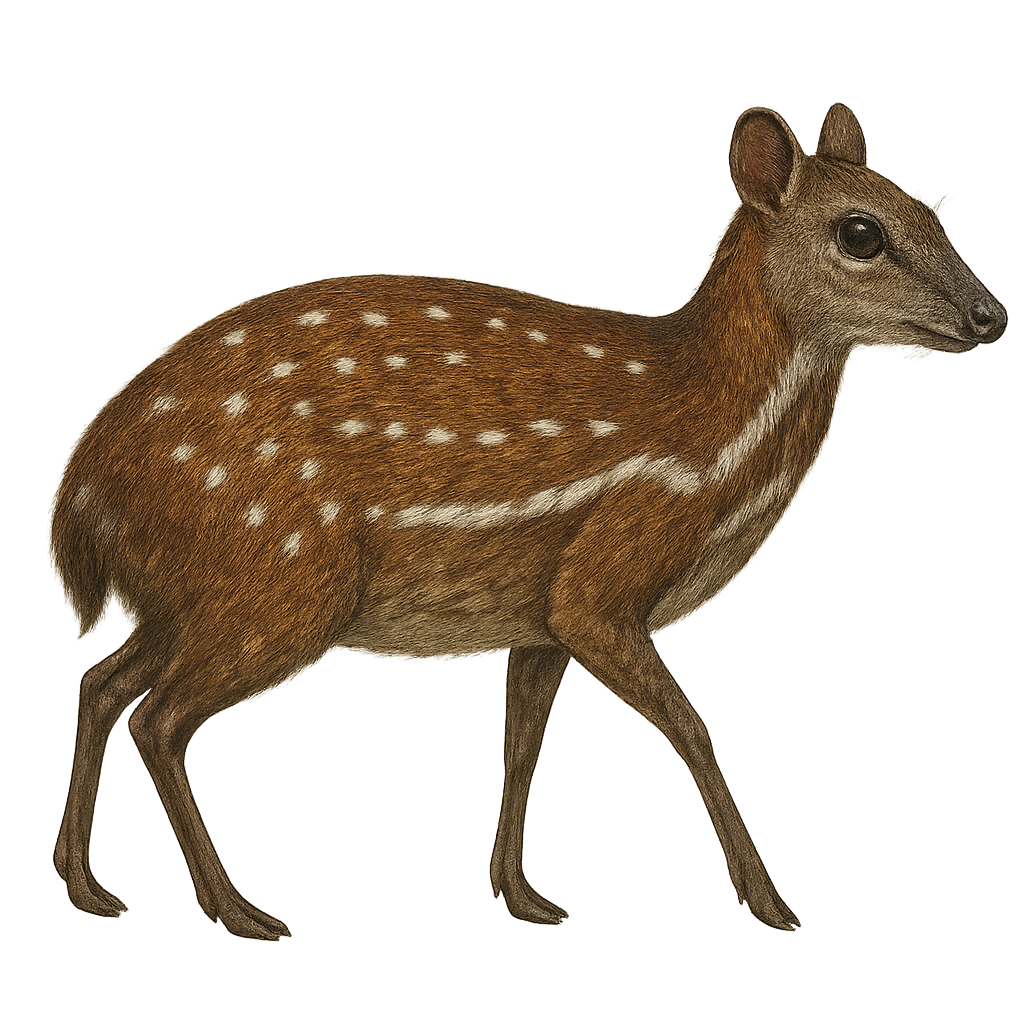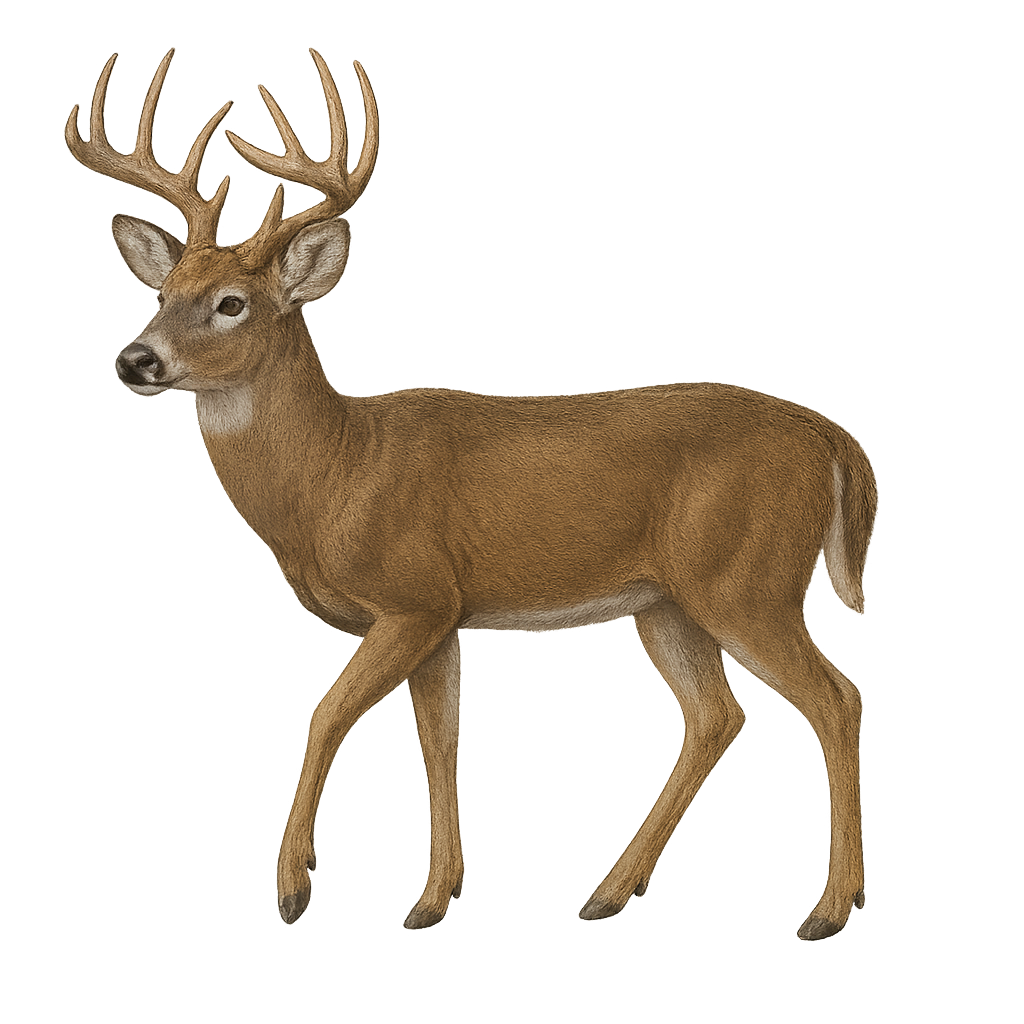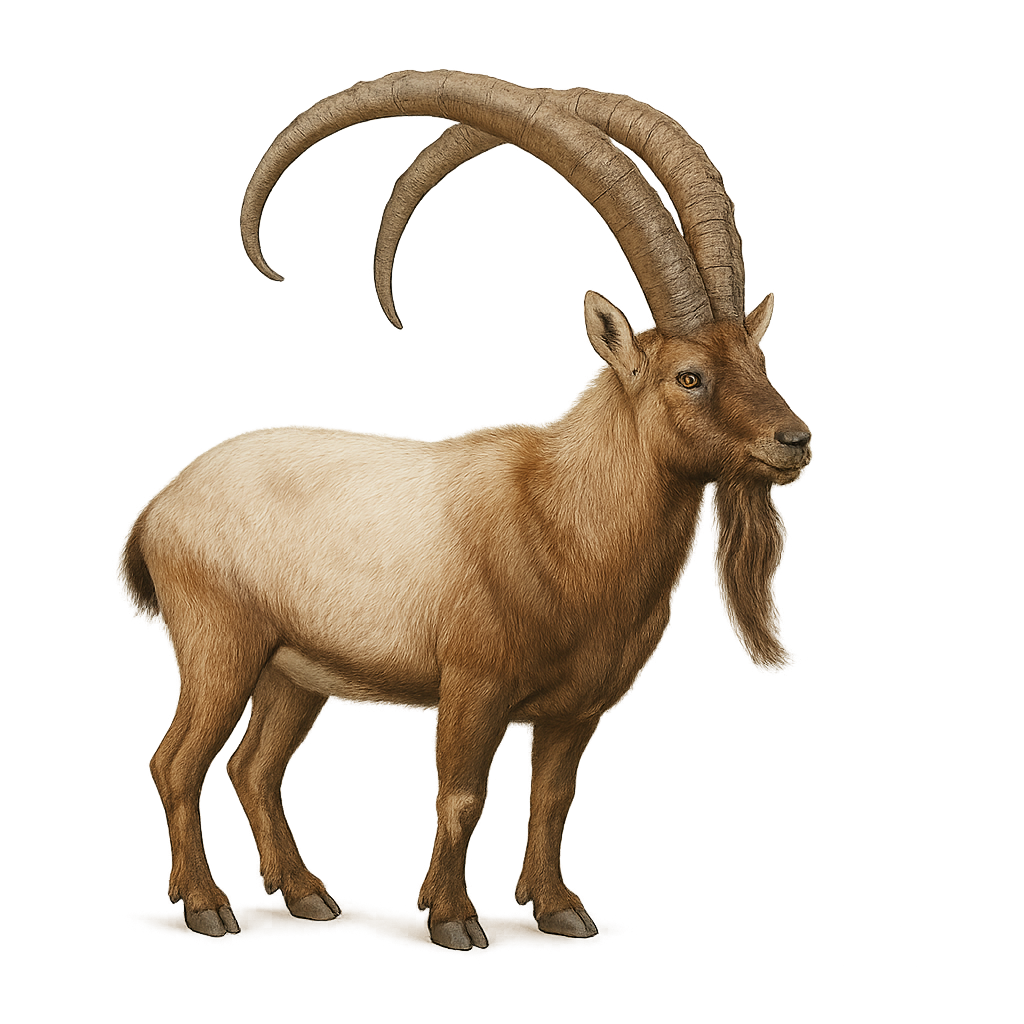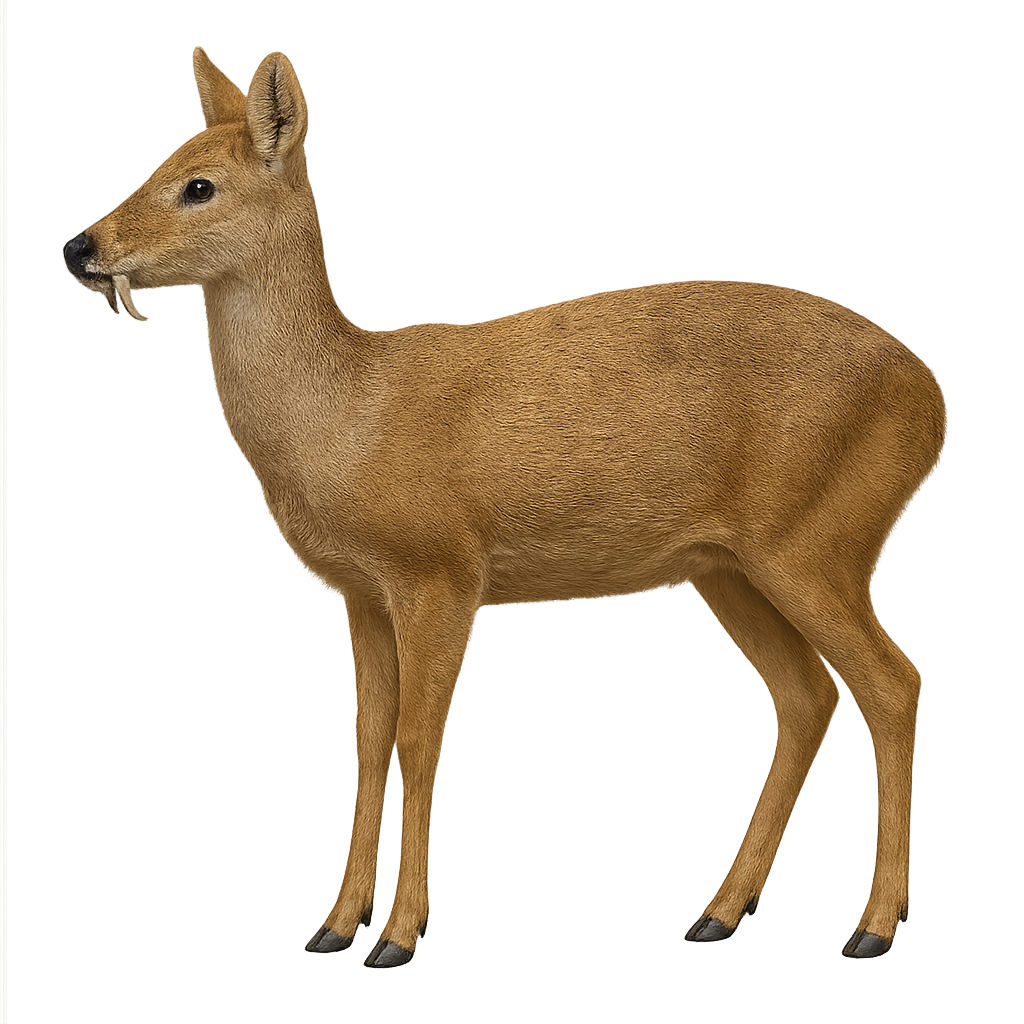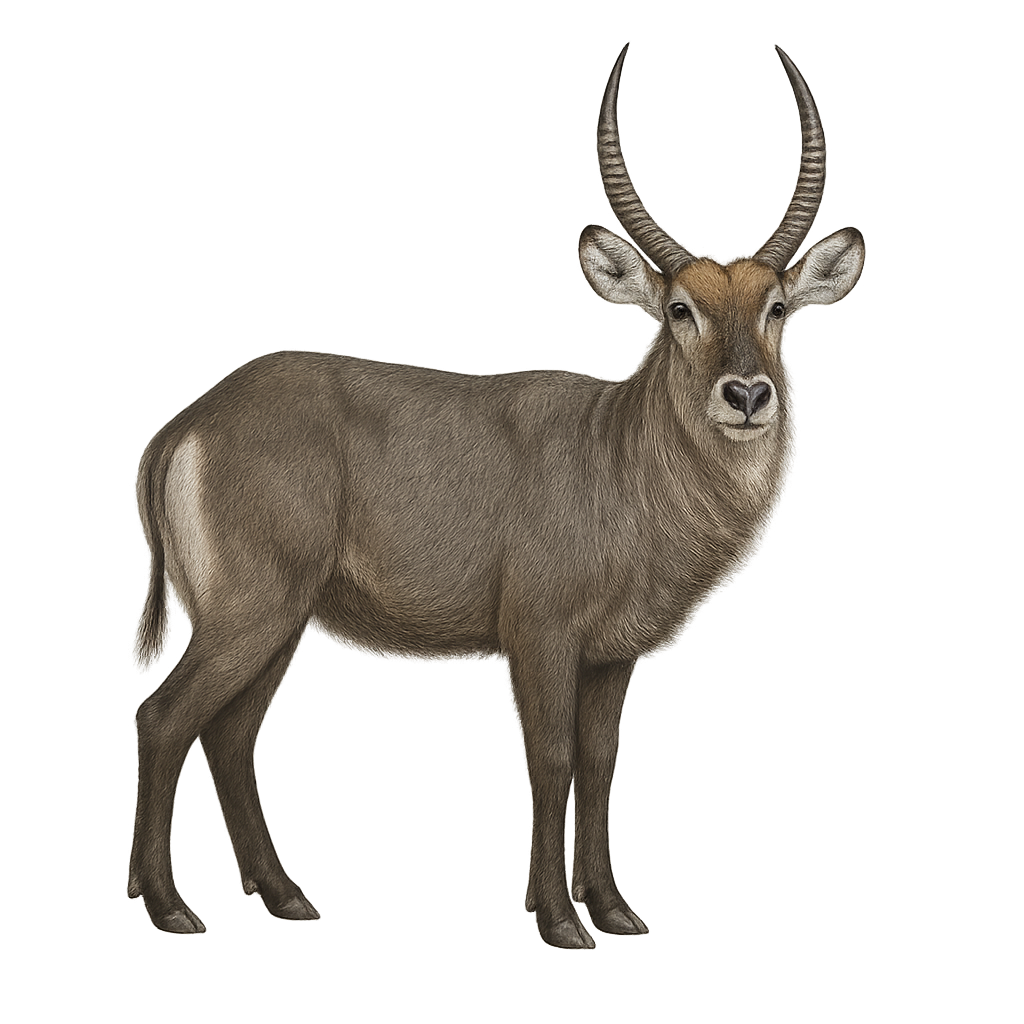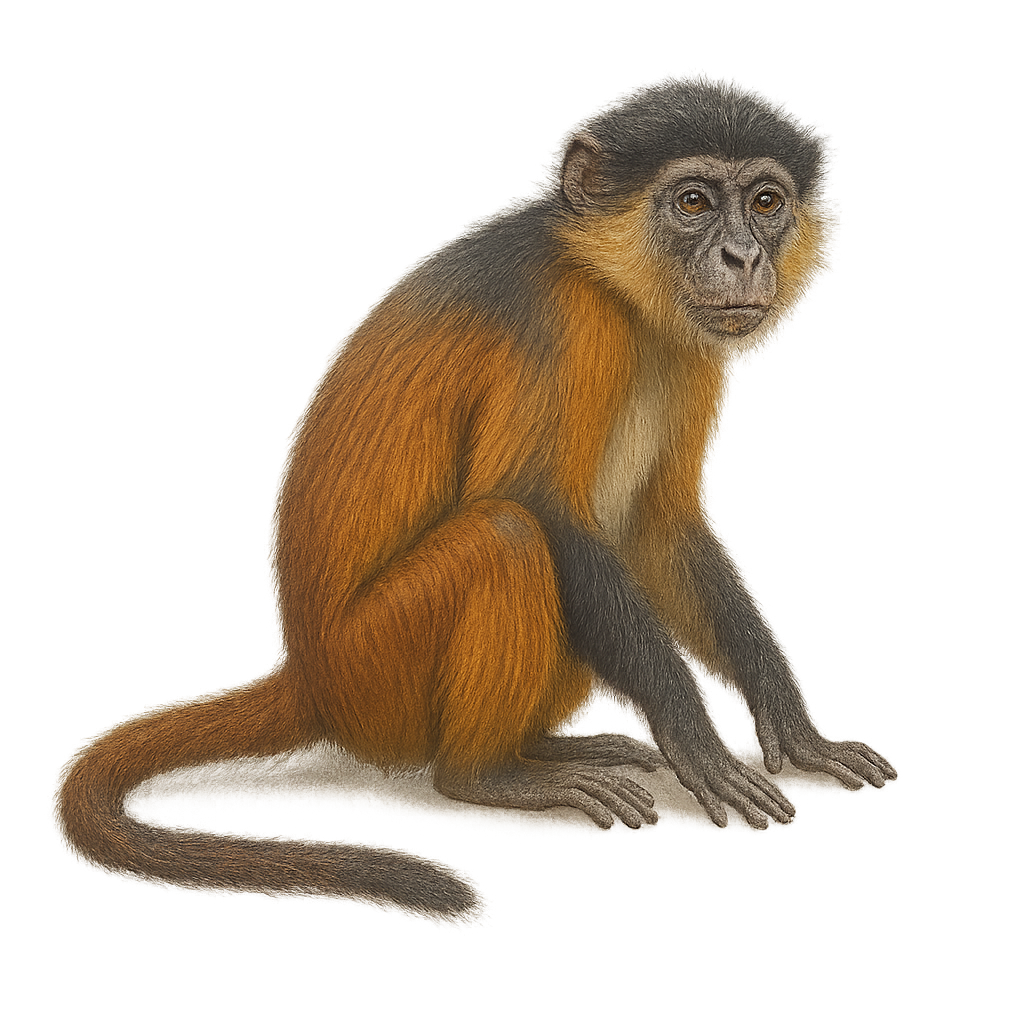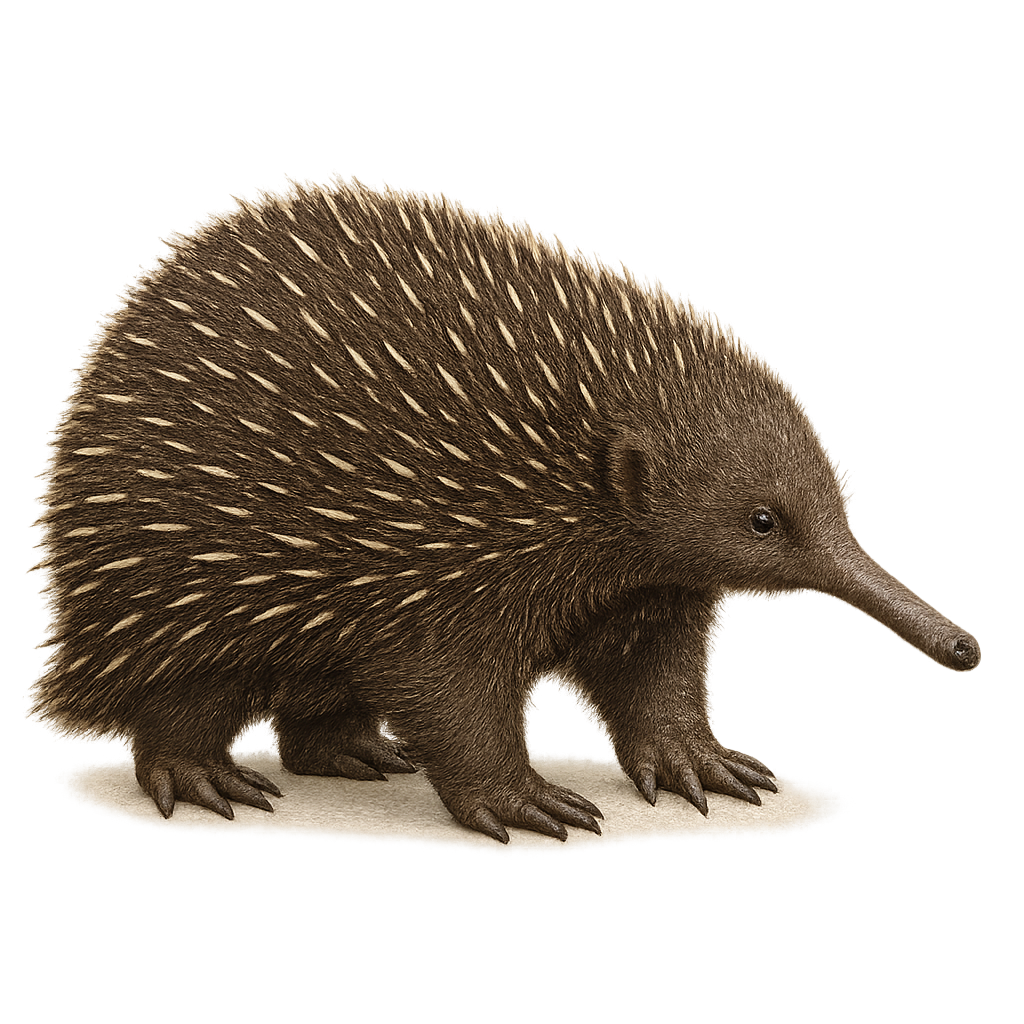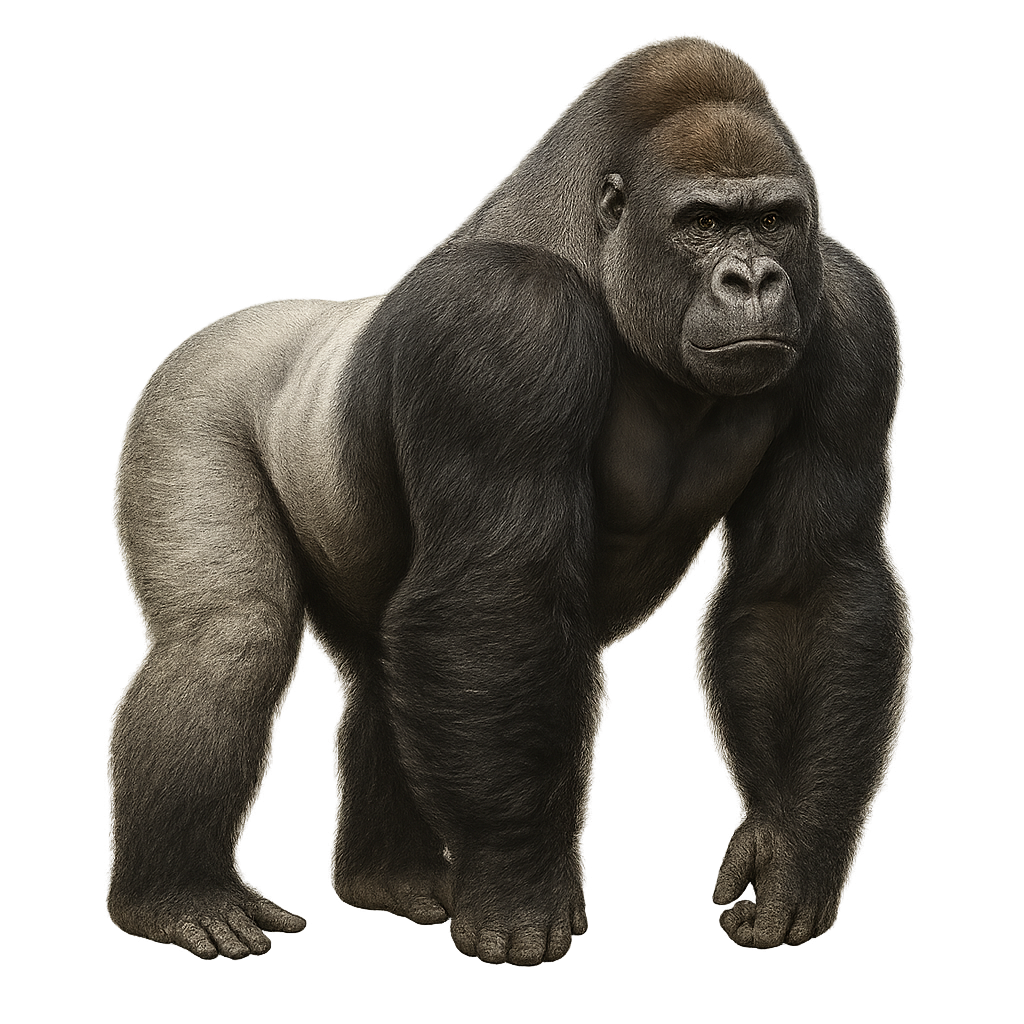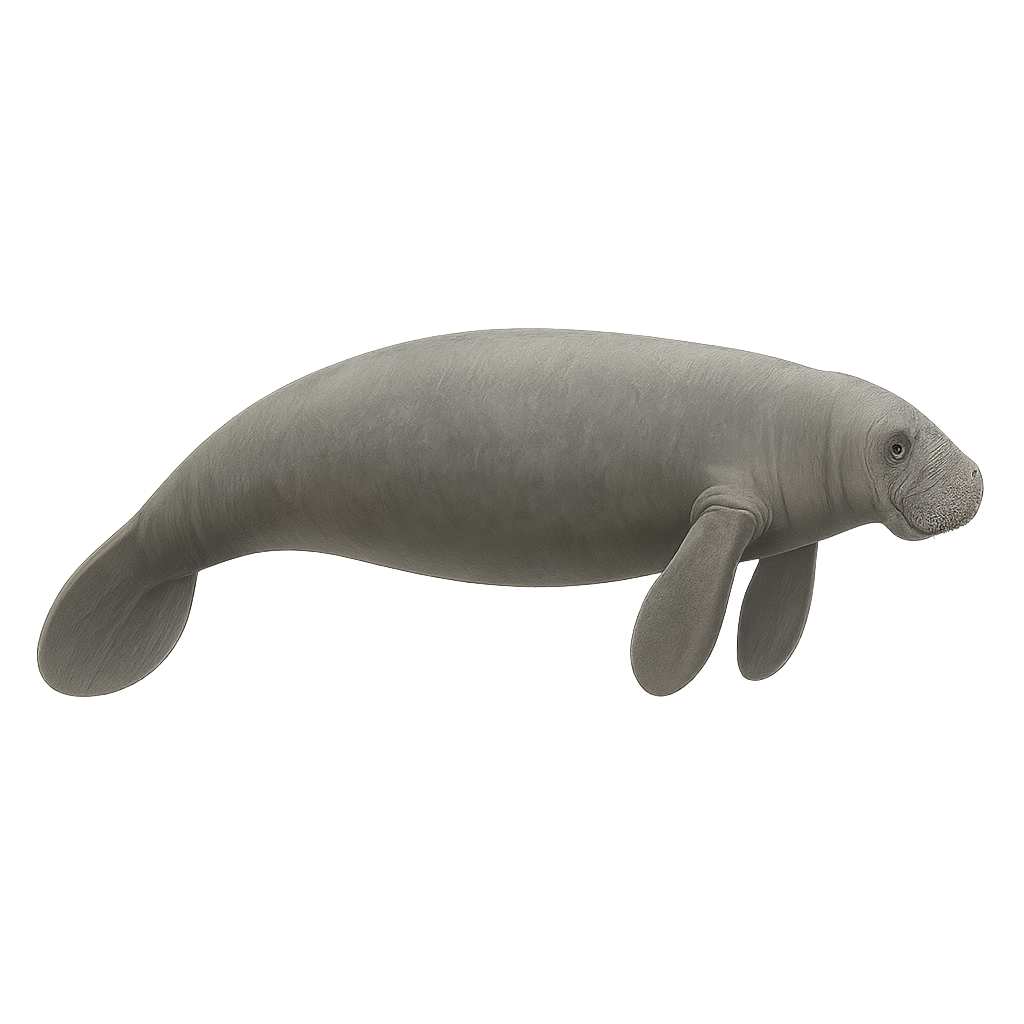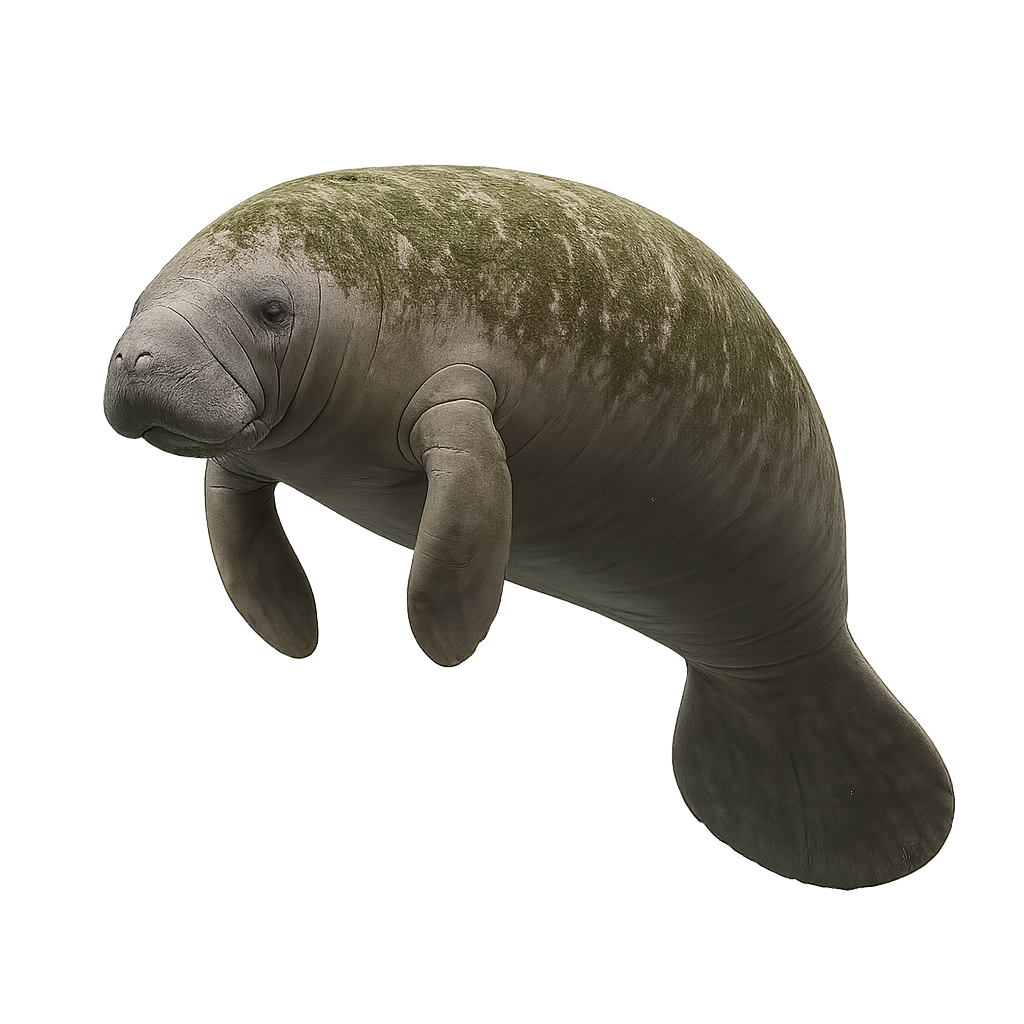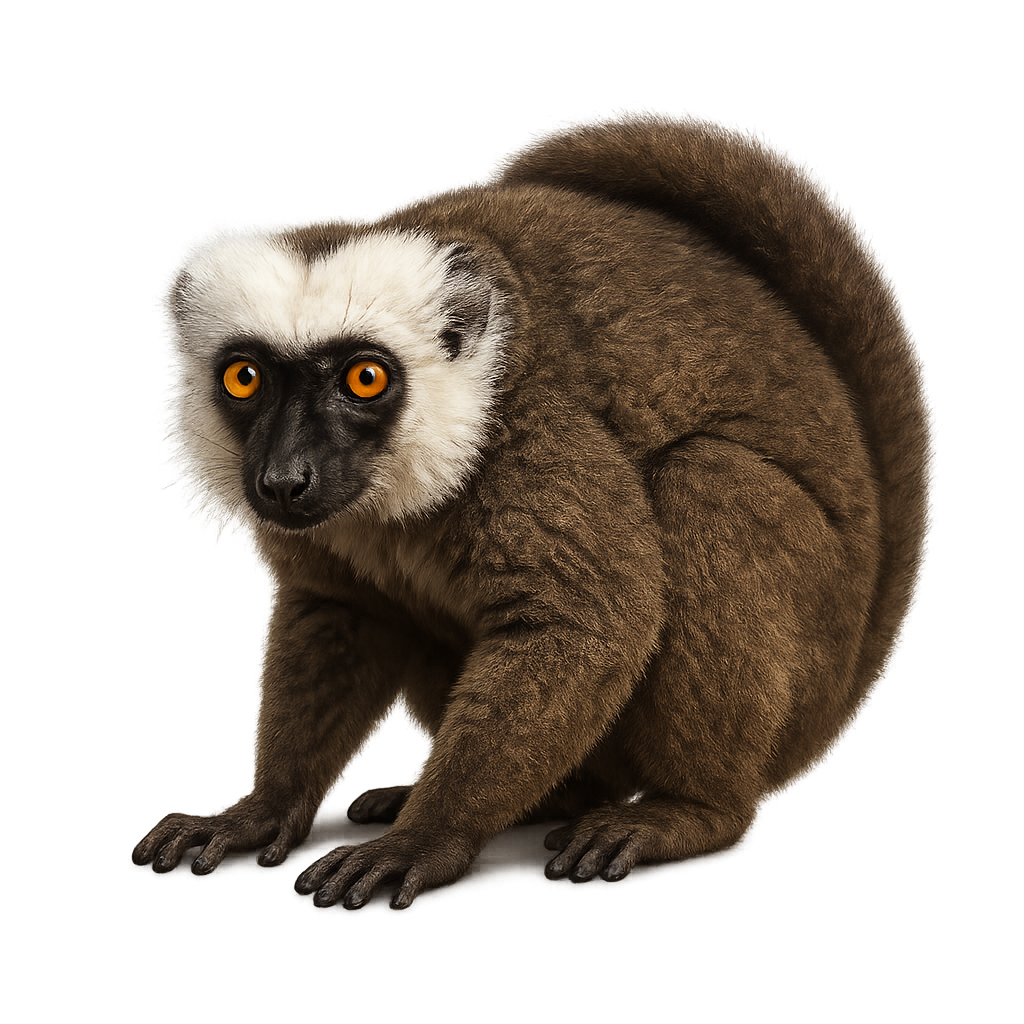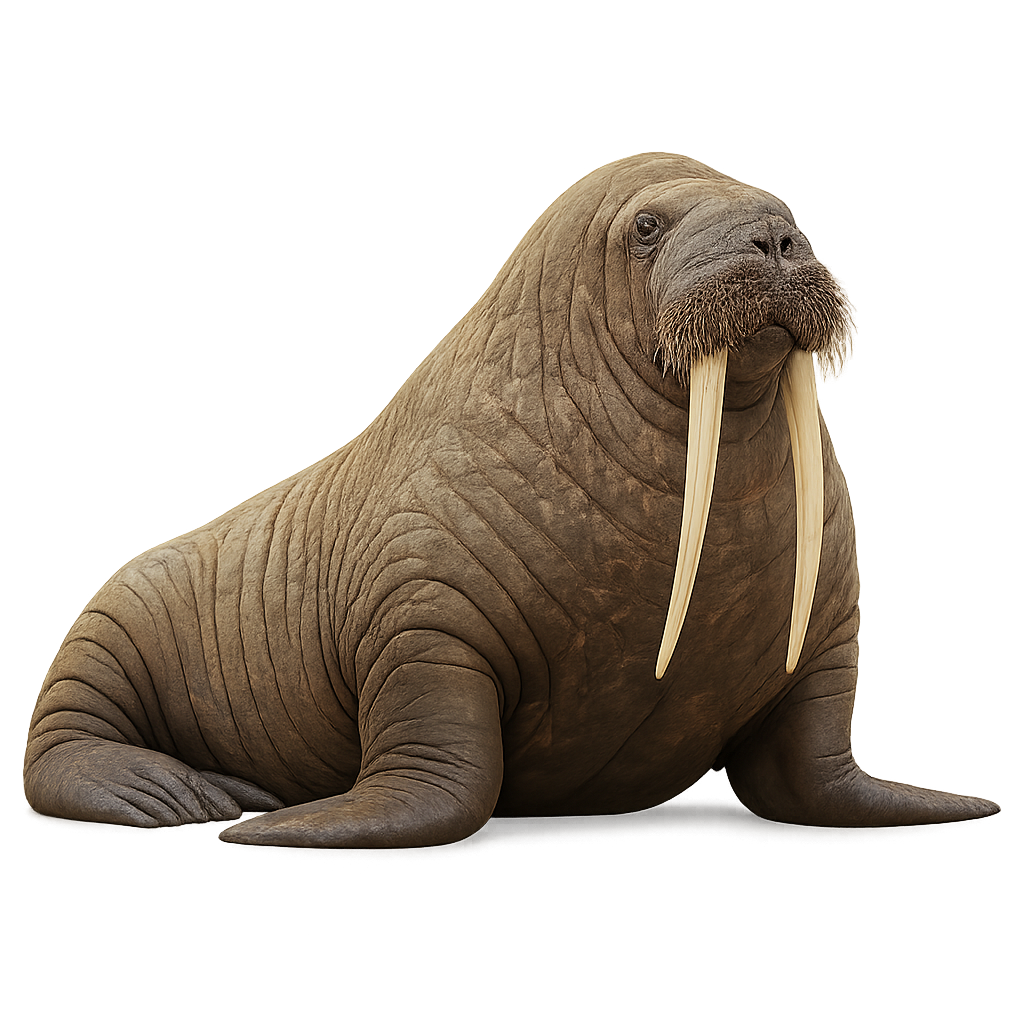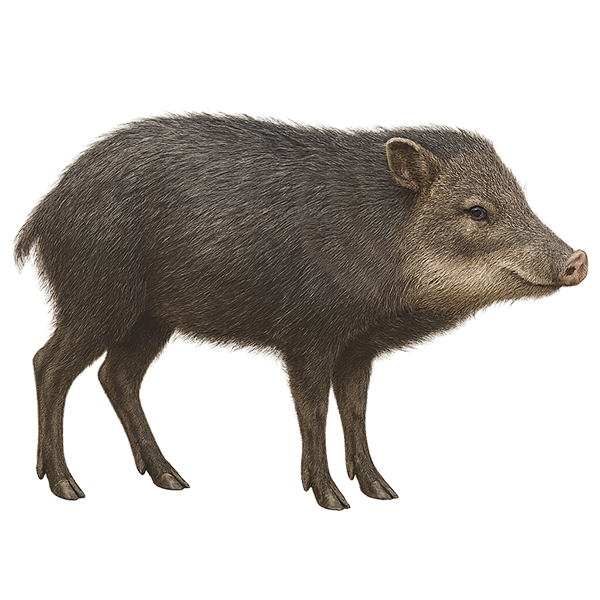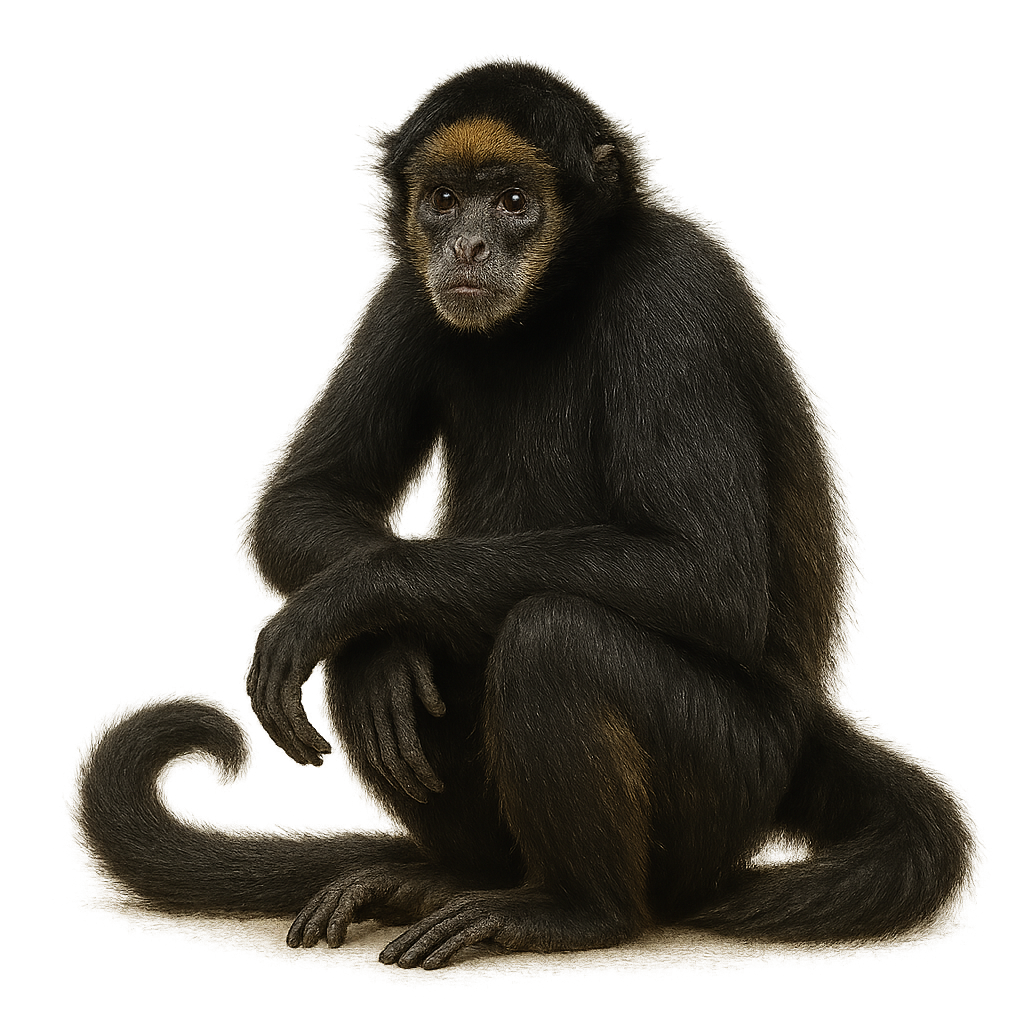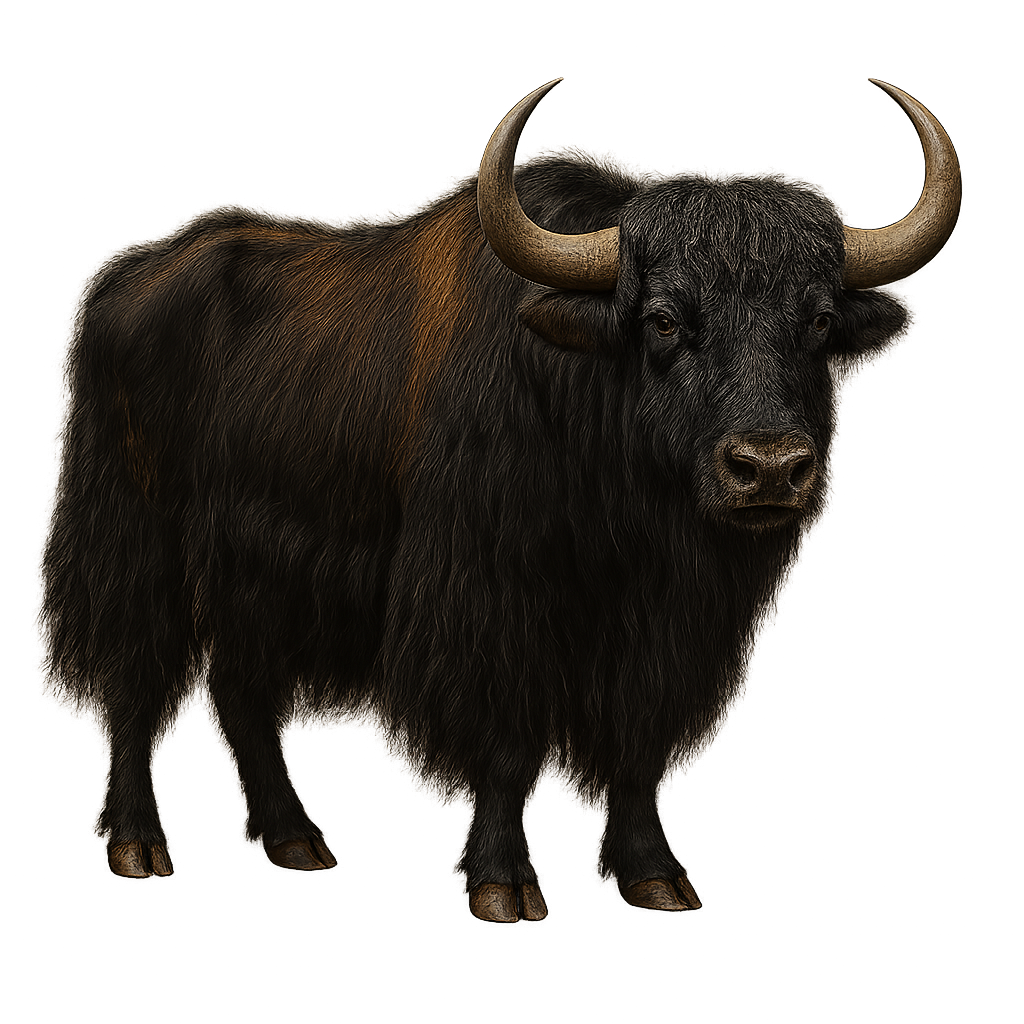The woylie, or Bettongia penicillata, is a small Australian marsupial known for its distinctive brush-tailed appearance. This nocturnal creature inhabits open forests and woodlands, playing a crucial ecological role by dispersing fungal spores. Measuring about 30 to 38 cm in length, with a tail of 29 to 36 cm, it weighs between 1.1 and 1.6 kg. Its fur is grey-brown with a lighter underside. Once widespread, its habitat has diminished due to predation by foxes and cats, as well as habitat loss. Conservation efforts are underway to protect this vulnerable species, including the establishment of reserves and captive breeding programs.
The Walia ibex, or Capra walie, is a species of ibex endemic to the Ethiopian highlands, particularly in the Simien Mountains National Park. It is distinguished by its impressive, curved horns, which can reach up to 110 cm in males. The coat is dark brown with lighter markings on the belly and legs. Males are generally larger and heavier than females, weighing up to 125 kg. This species is well adapted to steep, rocky terrains, where it primarily feeds on grasses and shrubs. Unfortunately, the Walia ibex is critically endangered due to hunting and habitat loss.
The Bubalus arnee, or wild water buffalo, is a large herbivorous mammal native to the wetlands and marshes of South and Southeast Asia. It is characterized by its massive build, curved horns, and thick skin often coated with mud to protect against insects and the sun. Wild water buffaloes live in herds and are known for their social behavior. They play a crucial role in their ecosystem by maintaining the balance of wetland areas. Unfortunately, their population is declining due to habitat loss, hunting, and hybridization with domestic buffaloes.
The water buffalo, or Bubalus bubalis, is a large domesticated mammal native to South and Southeast Asia. Known for its robustness and ability to thrive in wet environments like marshes and rice paddies, it has thick skin and distinctive curved horns. Primarily used for agricultural work and milk production, the water buffalo is vital to the rural economy in many regions. It is also valued for its meat. Although domesticated, it retains a suspicious behavior towards humans. Water buffaloes are social animals that live in herds and often move together for protection against predators.
The white-faced capuchin, Cebus capucinus, is a New World monkey known for its pale face contrasting with its dark body. It primarily inhabits the tropical rainforests of Central America, from Honduras to Panama. Agile and intelligent, it uses tools for feeding and engages in social interactions within hierarchical groups. Omnivorous, it consumes fruits, insects, small vertebrates, and occasionally bird eggs. Its ecological role is crucial, particularly in seed dispersal. Although adaptable, deforestation threatens its habitat. Its complex communication includes varied vocalizations and facial expressions.
The White-faced Capuchin is a small, intelligent, and social monkey, easily recognizable by its pale face, framed by darker fur, and its agile, slender body. This primate lives in the tropical forests of Central and South America, primarily inhabiting the canopy, where it feeds on fruits, seeds, insects, and occasionally small vertebrates.
White-faced Capuchins are highly social animals, living in family groups or bands of up to twenty individuals. They are known for their great learning ability and curious behavior, often used in behavioral studies due to their intelligence and problem-solving skills. Unfortunately, like many other primate species, they are threatened by deforestation and habitat loss.
The Cebus albifrons, or white-fronted capuchin, is a New World monkey found in the tropical forests of South America. It is easily recognized by its light brown fur and distinctive white face. These primates are highly social, living in groups of up to 30 individuals. They are omnivorous, feeding on fruits, insects, small vertebrates, and occasionally leaves. Their intelligence is remarkable, and they use tools to access food. Although primarily arboreal, they sometimes descend to the ground to forage. Their habitat is threatened by deforestation, impacting their population.
The water chevrotain, or Hyemoschus aquaticus, is a small, elusive mammal primarily inhabiting the tropical forests of West and Central Africa. This ruminant, belonging to the Tragulidae family, is often mistaken for a small deer due to its appearance. It has a brown coat with white spots, allowing it to blend seamlessly into its environment. Measuring about 80 cm in length and weighing between 7 and 16 kg, it is well-adapted to a semi-aquatic lifestyle, often seeking refuge in water to escape predators. Nocturnal and solitary, it feeds mainly on fruits, leaves, and young shoots.
The Weyns's Duiker is a small, elusive antelope native to the dense forests of Central Africa. It is characterized by its reddish-brown coat and short, straight horns. This mammal is typically solitary, although it can sometimes be seen in small family groups. It primarily feeds on leaves, fruits, and young shoots, playing a crucial role in seed dispersal. Its ability to move silently through dense vegetation makes it a challenging animal to spot in its natural habitat. Although not currently endangered, deforestation and hunting pose potential threats to its long-term survival.
The white-tailed deer, or Odocoileus virginianus, is a widespread cervid in North and South America. It is easily recognizable by its white tail, which it raises when alarmed. Males have antlers that they shed annually. The coat varies from reddish-brown in summer to gray-brown in winter, providing excellent camouflage. This deer is highly adaptable, living in various habitats from dense forests to open grasslands. It is primarily herbivorous, feeding on leaves, fruits, and young shoots. The white-tailed deer plays a crucial role in its ecosystem, influencing vegetation and serving as prey for many predators.
The wild goat, or Capra aegagrus, is a robust and agile animal native to the mountains of Western Asia. It is the ancestor of the domestic goat and is distinguished by its impressive, curved horns, especially prominent in males. Its coat ranges from brown to gray, providing excellent camouflage in its rocky habitat. Wild goats live in groups, often consisting of females and young, while adult males are more solitary. They are well adapted to rugged terrains and can climb with remarkable agility. Their diet mainly consists of mountain vegetation, making them dependent on climatic conditions and the availability of natural resources.
The water deer is a small semi-aquatic deer, 45–55 cm at the shoulder, with tawny fur and an elongated muzzle. Native to China and Korea and introduced in parts of Europe, it inhabits marshes, rivers, and wetlands, feeding on aquatic plants, grasses, and riparian thickets. Solitary and crepuscular, it often moves under vegetative cover.
The White-nosed Coati is a mammal from the raccoon family, easily recognized by its distinctive white snout that contrasts with its reddish-brown fur. It has a long, ringed tail that it uses to maintain balance while moving through trees. This small carnivore is primarily found in the tropical and subtropical forests of Central America, Mexico, and the southern Costa Rica, where it lives in social groups, often led by a dominant female.
Omnivorous, the White-nosed Coati feeds on fruits, insects, small vertebrates, eggs, and even small mammals. Its social lifestyle is marked by complex interactions within its family groups. Although its population remains relatively stable in certain protected areas, it is still threatened by deforestation, hunting, and habitat disruption. Conservation efforts aim to protect the forest areas of this agile and adaptable animal.
The waterbuck, or Kobus ellipsiprymnus, is a large African herbivore known for its grayish-brown coat and distinctive white ring on its rump. It primarily inhabits wet savannas and grasslands near water bodies, as it relies on water for survival. Males have long, curved horns, while females lack them. This gregarious mammal forms mixed herds, although adult males are often solitary or in small groups. The waterbuck is an excellent swimmer, allowing it to escape predators. Its diet mainly consists of grasses and aquatic plants.
The Western Red Colobus, or Piliocolobus badius, is an arboreal primate found mainly in the forests of West Africa. Recognizable by its reddish fur and black face, it is a social animal living in groups of up to 80 individuals. These monkeys primarily feed on leaves, but also consume fruits and flowers. Their specialized diet makes them vulnerable to deforestation and habitat loss. The Western Red Colobus is also known for its complex vocalizations used for group communication. Unfortunately, this species is threatened by hunting and habitat destruction, leading to a significant population decline in recent decades.
The White-beaked Dolphin is a small cetacean from the Delphinidae family, easily recognizable by its white beak and distinctive markings on its body. It typically measures between 1.5 and 2.5 meters in length and weighs between 70 and 150 kg. This dolphin primarily inhabits the cold and temperate waters of the North Atlantic, particularly around Iceland, Greenland, and the North American coasts. It primarily feeds on fish and cephalopods, using group hunting techniques to capture its prey. The White-beaked Dolphin is often seen in small groups or families, and it is known for its complex social behaviors, including group play and acrobatic leaps. This dolphin has a lifespan of about 20 to 30 years in the wild. Although the species is not currently endangered, it faces threats from pollution, underwater noise, and ship collisions. Managing its marine habitats is crucial for the preservation of this species.
The Western Long-beaked Echidna, or Zaglossus bruijni, is a fascinating mammal native to New Guinea. It is distinguished by its long snout and dorsal spines, similar to those of a hedgehog. This animal is a monotreme, meaning it lays eggs while being a mammal. It primarily feeds on earthworms and insects, which it finds using its sensitive snout. The Western Long-beaked Echidna is a solitary and discreet animal, living in dense forests and mountainous regions. Unfortunately, it is threatened by habitat loss and hunting, making it critically endangered according to the IUCN.
The Wolverine is a robust and solitary carnivore, often compared to a small bear due to its size and strength. It measures about 65 to 87 cm in length, with a tail measuring 30 to 40 cm, and weighs between 10 and 30 kg. Its fur is typically dark brown, with lighter markings on the legs and throat, forming a distinctive "mask" around its face. The Wolverine has powerful musculature, allowing it to capture prey much larger than itself, such as deer or reindeer, although it primarily feeds on small mammals, insects, and carcasses. It is an opportunist, capable of stealing food from other predators such as wolves or bears. The Wolverine primarily inhabits the northern forests of Asia and North America, including Scandinavia, Russia, Canada, and Alaska. It is an excellent climber and swimmer, well-adapted to cold, snowy environments. Although its population remains relatively stable in some areas, the Wolverine faces threats related to habitat loss, climate change, and human persecution.
The Western Lowland Gorilla, Gorilla gorilla gorilla, is the smallest of the gorilla subspecies, yet remains an imposing primate. It primarily inhabits the dense tropical forests of Central Africa, notably in Cameroon, the Republic of the Congo, and the Central African Republic. This gorilla is recognizable by its brownish-gray fur, with a lighter shade on the backs of adult males, often referred to as "silverbacks." Western Lowland Gorillas live in family groups led by a dominant male. They are primarily herbivorous, feeding on leaves, fruits, and stems. Although their behavior is generally peaceful, they can become aggressive to protect their group.
The Western Gorilla is a large primate species, closely related to its cousin the mountain gorilla. It is slightly smaller, with an average size of 1.6 to 1.8 meters for males and 1.4 to 1.6 meters for females, weighing between 140 and 200 kg for males and 70 to 120 kg for females. Its fur is generally black, with lighter hair on the back of adult males, who are referred to as "silverbacks" due to the silver color of their back fur. Western Gorillas primarily inhabit the tropical forests of West and Central Africa, notably in Cameroon, the Republic of Congo, the Central African Republic, and Guinea. They feed mainly on plants, fruits, leaves, and stems, and they are predominantly herbivores. Western Gorillas live in social groups led by a dominant male, and they are known for their calm and peaceful behavior. While they are not as endangered as mountain gorillas, Western Gorillas are still at risk due to habitat loss, poaching, and disease.
The West African manatee, or Trichechus senegalensis, is a fascinating aquatic mammal inhabiting the coastal waters and rivers of West Africa. Recognizable by its massive, streamlined body, thick gray skin, and paddle-shaped tail, it can grow up to 4 meters long and weigh around 500 kg. This peaceful herbivore primarily feeds on aquatic plants. Although often solitary, it can sometimes be seen in small groups. Unfortunately, the West African manatee is threatened by hunting, habitat degradation, and boat collisions. Conservation efforts are crucial to preserving this emblem of African aquatic biodiversity.
The West Indian manatee is a large marine mammal, often called the 'sea cow.' It primarily lives in shallow coastal waters, estuaries, and rivers of the Caribbean, Gulf of Mexico, and Florida. This herbivorous mammal feeds mostly on aquatic plants and can consume up to 100 kg of vegetation per day. The West Indian manatee is a calm and slow-moving animal, with thick skin and sensitive whiskers that help it detect food in the water. While not aggressive, it is endangered due to habitat loss, boat collisions, and water pollution.
The White-fronted lemur is a species of lemur endemic to Madagascar, where it primarily lives in the humid tropical forests of the island's northwest. It is easily recognized by its gray-brown fur and the large white patch on its forehead, from which it derives its name. This lemur is primarily frugivorous, feeding on fruits, flowers, and nectar. It lives in complex social groups and exhibits strong territorial behaviors, including loud vocalizations to define its territory. Although often active during the day, it is also known to be particularly active at dusk.
The Eurasian elk, known as the largest member of the deer family, is found mainly in Scandinavia, Eastern Europe, and across Russia to parts of northern Asia. It can grow up to 2 meters tall at the shoulder and weigh between 350 and 600 kg. Males are known for their broad, palmate antlers, which can span up to 1.8 meters. Their coat is usually dark brown to black, with a lighter belly and a small mane under the neck. This herbivore feeds on leaves, twigs, bark, fruits, and aquatic plants. A strong swimmer, it often forages in wetlands, lakes, and damp forests. Although populations are stable in some areas, the species remains vulnerable due to habitat fragmentation and hunting.
The white-lipped peccary, Tayassu pecari, is a medium-sized mammal belonging to the Tayassuidae family. It is characterized by its dark brown to black fur with a distinctive white band around its mouth. This peccary lives in social groups that can number up to several dozen individuals, which is essential for its survival against predators. It primarily inhabits the dense tropical forests of Central and South America, where it plays a crucial role in the ecosystem by dispersing seeds. An omnivore, it feeds on fruits, roots, insects, and small animals. Unfortunately, this species is threatened by deforestation and excessive hunting, leading to a significant decline in its population.
The white-bellied spider monkey, Ateles belzebuth, is an arboreal primate primarily inhabiting the tropical forests of South America. Recognizable by its black fur and distinctive white face, it has long limbs and a prehensile tail that enable agile movement through the canopy. This social monkey lives in groups of up to 30 individuals, although they often split into smaller subgroups to forage. Primarily frugivorous, it also consumes leaves, flowers, and insects. Unfortunately, Ateles belzebuth is threatened by deforestation and hunting, leading to a decline in its population.
The Elk is a large cervid primarily found in North America, in forests, grasslands, and mountains, notably in Canada and the United States. It typically measures between 1.5 and 2 meters in height at the shoulder and can weigh between 300 and 500 kg. The Elk is easily recognizable by its large antlers, which can reach up to 1.2 meters in width. Its coat varies from light brown to dark brown, with a lighter area around the neck. It primarily feeds on grasses, leaves, and bark, and is especially active during the fall, during the rutting season. While the Elk population is relatively stable, some subpopulations are threatened by habitat loss and disease.
The Wild Yak is a large species of cattle native to the mountains of the Himalayas, Tibet, and the high plateaus of Central Asia. It typically measures about 2 to 3 meters in length and weighs between 400 and 1,000 kg. Its coat is long, thick, and woolly, ranging from black to brown, which helps it survive in extreme cold conditions. The Wild Yak is primarily herbivorous, feeding on grasses, lichens, and woody plants. It lives in herds in mountainous environments at high altitudes, often above 3,000 meters. While it is a protected species in some areas, the Wild Yak is threatened by illegal hunting and habitat loss due to urbanization and excessive grazing.


